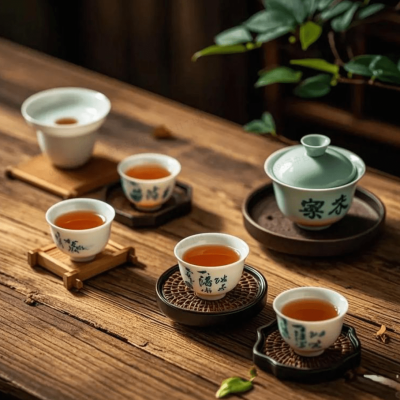In the vast ancient literature of China, scattered records about tea exist, but pinpointing its exact origins remains challenging. Lu Yu wrote in The Classic of Tea: “Tea as a beverage originated from Shennong.” Shennong, the mythical discoverer of all crops and the progenitor of China’s agricultural civilization, was not a single individual but a collective embodiment of ancient wisdom.
Legend holds that while Shennong boiled water in a cauldron, leaves from a tree drifted into the pot. After drinking the infused water, he found it sweet and refreshing, banishing fatigue. Drawing from his experience tasting hundreds of herbs, he introduced it as a medicinal tonic. Shennong’s Herbal Classic records: “Shennong sampled a hundred herbs, encountered seventy-two poisons in a day, and was cured by tu (tea).” This account underscores tea’s early medicinal value. Yet, could tea have first served as food for ancient tribes or as an offering in totemic rituals? Such possibilities remain. Whatever the catalyst, once tea intertwined with human life, it sparked a wondrous reaction, akin to the fusion of two chemicals.
Before the Tang Dynasty, tea was often consumed alongside other foods, and its cultural identity remained underdeveloped. By the mid-Tang period, Lu Yu’s The Classic of Tea elevated tea’s status, blending natural and humanistic sciences to articulate its artistry. This marked the formal birth of Chinese tea culture.
The Song Dynasty inherited Tang traditions, propelling tea culture further. Emperors gifted tea to courtiers as a gesture of favor, while elites reveled in “tea competitions,” and literati showcased their refinement through tea. Commoners, too, integrated tea into daily life. Terms like Yuanbao tea (symbolizing wealth), offering tea, engagement tea, and unity tea reflected its pervasive role.
During the Ming and Qing Dynasties, tea culture peaked. Diverse processing methods emerged—steamed, pan-fired, or baked green tea; unfermented, semi-fermented, and fully fermented varieties—alongside refined techniques. The simplified “brewing method” better preserved tea’s natural flavor. From emperors to peasants, tea became a daily necessity. Scholars produced timeless works centered on tea, transforming it from mere drink to a symbol of lifestyle and artistic inspiration.


